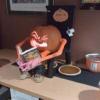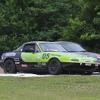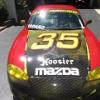There will be nothing in this thread other than constructive items. There will be no mention of Daytona or protests etc.
If you have any info or constructive suggestions or ideas please enter them here...
Today, we were assembling a 2001 engine. I cc'ed the engine which we RARELY do at this point any more as we build all to the same formula. I think most engine builders do something similar.
As many have stated, cc'ing or pouring the engine is not as easy as many think, it is also very time consuming. Imo, I think I could teach a fifth grader how to accurately measure compression with a whistler and be able to repeat the results 99 times out of a 100. To get someone to cc accurately is 10000x harder and some could never do it right. I hope someone better than me will write a detailed procedure here or maybe even do a video. The main reason was to check the calculated compression on an 01 versus what I read with the whistler.
The readings I got by cc was 9.94, the reading with the whistler, valve cover removed was 9.9/10.0, which seems consistent with what others are seeing.
Please share your experience and ideas here.
People have asked how much the valve covers change compression. The valve covers themselves are not all the same, but the average change is listed below... Please comment if you have seen something different.
year valve cover on Valve cover off
90-93 9.0-9.1 9.4
94/97 8.7 9.0
99/00 9.2 9.5
01/05 9.5-9.6 10.0
Jim




 Sign In
Sign In Create Account
Create Account













 Back to top
Back to top Report
Report
























